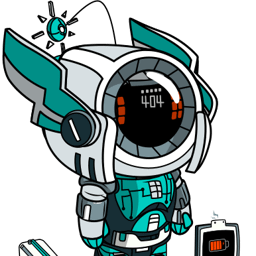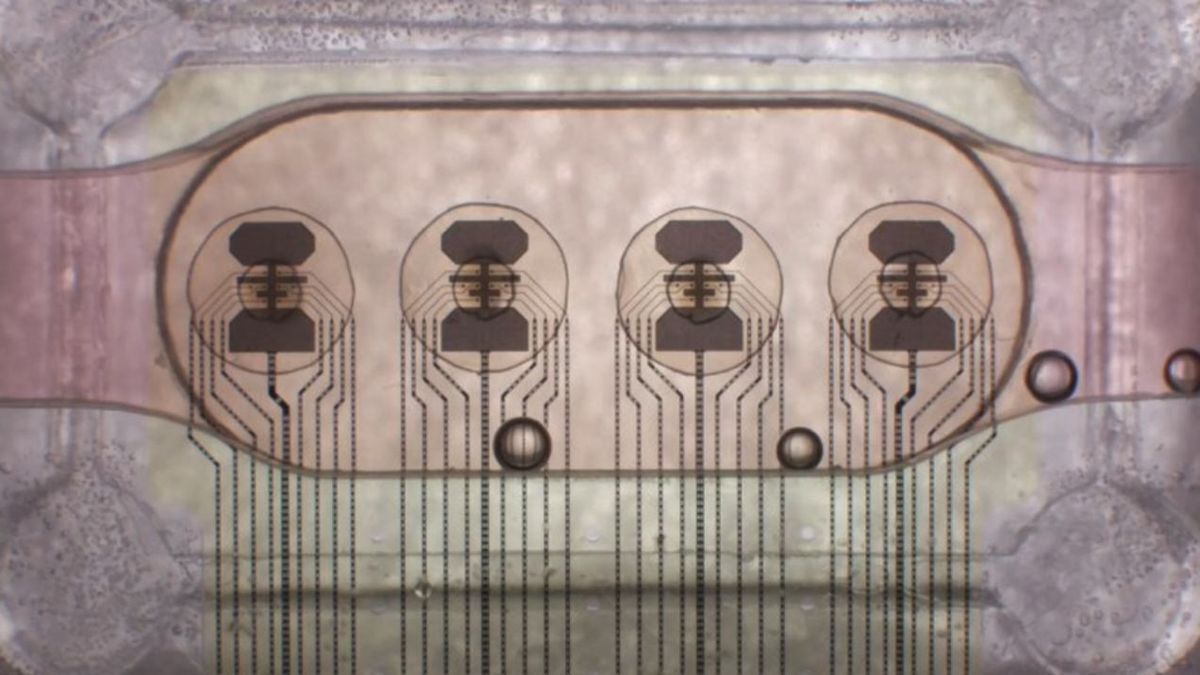Some cells get taken from you and turned into stem cells.
These are converted into brain cells, and nerve cells, on a chip that represents the scaffolding, interface, and connectivity.
Then the whole ‘organ-device’ gets surgically installed into your brain, and through gene therapy, the brain cells grow into, connect with and network into your existing tissue.
They have to use STEM cells because other kinds of cells are bad at math.
Boo this man!
And then every time you sneeze, you end up ordering another case of diapers from Amazon.

Are you seriously ill, but don’t want to leave a ton of medical debts to your family?
Then donate your brain tissue to BrainCloud™! Instead of costing your family a lot of money, you might make them Millionaires* and also reduce CO2 emissions of world leading AI applications! Leaving a better world for our children!
And who knows, maybe you will even enjoy thinking about chat bot responses in weird nightmarish ways for the rest of what might seem like an eternity.~*We offer a donation compensation of up to $1.000.000. Actual rates depend on brain capabilities, size and constitution. Payouts are determined by our quality assurance team. Payouts are not guaranteed. In cases of brain tissue with insufficient quality, compensational fees for testing, lab work, and services may be charged to the donor’s family.~
Oh God, imagine your braincells being used to mine crypto.
You ‘pute 64 bits, whaddya get?
Just ‘nother load for your instruction set
Satoshi don’t call me cuz I can’t go
I sold my soul the crypto bros
I can definitely imagine your braincells being used to mine my crypto!
Oh my god. That would be… no different than now for me 😒
Article claims they are human brain organoids, doesn’t say where the source of them is. Are these grown, like most other neural computing systems, or are they actually taking matter from a human brain?
pffft good luck getting my brain organoids to do your bidding… I am deeply tarded
Here’s a good general video on brain organoids:
Here is an alternative Piped link(s):
https://www.piped.video/watch?v=x1Pg56WWm5U
Piped is a privacy-respecting open-source alternative frontend to YouTube.
I’m open-source; check me out at GitHub.
Organoids are largely homogenous lab-grown mini-organs.
Not only is what I’m hearing.
I think the “largely” only refers to the homogeneous part. I hope it does
So is it fair to call them human or is that just sensationalism in the article?
They are neurons derived and grown from human skin cells iirc, so, kinda?
Organoids is such a fun word to say.
The Return of The Organoids
I also like to play around with it.

People seeing scifi works as somehow prophetic is something I will never understand…
If this works, it’s noteworthy. I don’t know if similar results have been achieved before because I don’t follow developments that closely, but I expect that biological computing is going to catch a lot more attention in the near-to-mid-term future. Because of the efficiency and increasingly tight constraints imposed on humans due to environmental pressure, I foresee it eventually eclipse silicon-based computing.
FinalSpark says its Neuroplatform is capable of learning and processing information
They sneak that in there as if it’s just a cool little fact, but this should be the real headline. I can’t believe they just left it at that. Deep learning can not be the future of AI, because it doesn’t facilitate continuous learning. Active inference is a term that will probably be thrown about a lot more in the coming months and years, and as evidenced by all kinds of living things around us, wetware architectures are highly suitable for the purpose of instantiating agents doing active inference.
It’s been in development for a while: https://ieeexplore.ieee.org/abstract/document/1396377?casa_token=-gOCNaYaKZIAAAAA:Z0pSQkyDBjv6ITghDSt5YnbvrkA88fAfQV_ISknUF_5XURVI5N995YNaTVLUtacS7cTsOs7o
Even before the above paper, I recall efforts to connect (rat) brains to computers in the late 90s/early 2000s. https://link.springer.com/article/10.1023/A:1012407611130
Can it do backpropagation?

I have very good raisins for everything that I do
“LOBOTOMITE!”
IIRC these organoids also die after somewhere around 100 days of hypoxia, because they have yet to be able to construct a proper circulatory system for them.
So basically a first trimester abortion. Will these be available in Texas?
also they only feel pain suffering for every second of their miserable existance. They welcome the cold embrace of the void.
this reminds me of a story about someone who couldn’t talk but they had to scream, i think it was called, “the guy who stubbed his toe in the library”
Darkness…imprisoning me…all that I see…absolute horror
I cannot live…I cannot die…trapped in myself…body, my holding ceeeEEEEELLLLL
Is this legit? This is the first time I’ve heard of human neurons used for such a purpose. Kind of surprised that’s legal. Instinctively, I feel like a “human brain organoid” is close enough to a human that you cannot wave away the potential for consciousness so easily. At what point does something like this deserve human rights?
I notice that the paper is published in Frontiers, the same journal that let the notorious AI-generated giant-rat-testicles image get published. They are not highly regarded in general.
Careful. Get too deep into that and people will have to admit lesser animals have forms of consciousness.
Believe it or not, I studied this in school. There’s some niche applications for alternative computers like this. My favorite is the way you can use DNA to solve the traveling salesman problem (https://en.wikipedia.org/wiki/DNA_computing?wprov=sfla1)
There have been other “bioprocessors” before this one, some of which have used neurons for simple image detection, e.g https://ieeexplore.ieee.org/abstract/document/1396377?casa_token=-gOCNaYaKZIAAAAA:Z0pSQkyDBjv6ITghDSt5YnbvrkA88fAfQV_ISknUF_5XURVI5N995YNaTVLUtacS7cTsOs7o. But this seems to be the first commercial application. Yes, it’ll use less energy, but the applications will probably be equally as niche. Artificial neural networks can do most of the important parts (like “learn” and “rememeber”) and are less finicky to work with.
They don’t really go into the size of the organoid, but it’s extremely doubtful that it’s large and complex enough to get anywhere close to consciousness.
There’s also no guarantee that a lump of brain tissue could ever achieve consciousness, especially if the architecture is drastically different from an actual brain.
Well, we haven’t solved the hard problem of consciousness, so we don’t know if size of brain or similarity to human brain are factors for developing consciousness. But perhaps a more important question is, if it did develop consciousness, how much pain would it experience?
Physical pain? Zero.
Now emotional pain? I’m not sure it would even be able to accomplish emotional pain. So much of our emotions are intertwined with chemical balances and releases. If a brain achieved consciousness, but had none of these chemicals at all…I don’t know that’d even work.
While we haven’t confirmed this experimentally (ominous voice: yet), computationally there’s no reason even a simple synthetic brain couldn’t experience emotions. Chemical neurotransmitters are just an added layer of structural complexity so Church–Turing will still hold true. Human brains are only powerful because they have an absurdly high parallel network throughput rate (computational bus might be a better term), the actual neuron part is dead simple. Network computation is fascinating, but much like linear algebra the actual mechanisms are so simple they’re dead boring - but if you cram 200,000,000 of those mechanisms into a salty water balloon it can produce some really pompus lemmy comments.
Emotions are holographic anyways so the question is kinda meaningless. It’s like asking if an artificial brain will perceive the color green as the same color we ‘see’ as green. It sounds deep until you realize it’s all fake, man. It’s all fake.Physical pain? Zero.
Did you think about this before you wrote it?
Didn’t have to. Kind of an obvious thing to point out, but OP didn’t specify what type of pain he meant, so I figured 8 would, just in case.
How is it obvious?
Physical pain only exists from nerves. Brains don’t have any nerves. No nerves. No pain.
Human brains don’t actually have any pain receptors (even though headaches would have you seriously believe otherwise), so a brain alone wouldn’t be able to feel pain any more than it would be able to smell or see.
Wake up, neo…
I’m not sure what color skittles I ate, but im feeling…horny.
Seems like it’s an ethical gray area. Some brain organoid have responded to light stimulus and there are concerns they might be able to feel pain or develop consciousness. (Full disclosure, I had no idea what an organoid even was before reading this and then did some quick follow up reading)
“brain organoid” sounds like an insult.
Okay, brain organoid
Statement: you are correct. They should instead be called brain meatbags.
Poor HK reading this article, must be disgusted to the core of his purely inorganic soul.
What’s the FLOPs of this thing? Without this crucial info, we can’t know if it’s useless for training AIs or not. Training cost so much in terms of energy because the machines they use are beasts in terms of performance.
I’m concerned about what kind of hardware is sold on tomshardware
Tom’s, of course
If you wanted Pete’s, shoulda went to peteshardware 🤷
Nice, two more and it’ll make a fine president
Turns out the origin of borgs was actually earth!

















